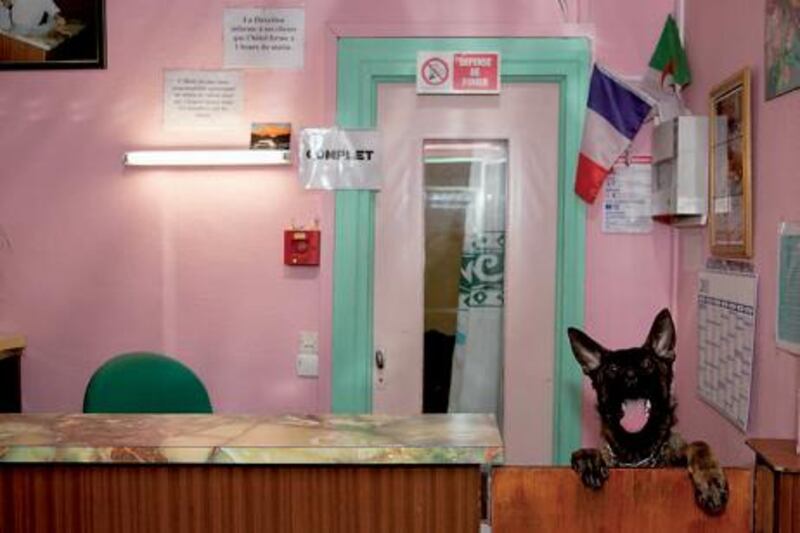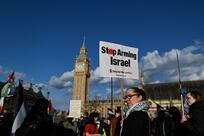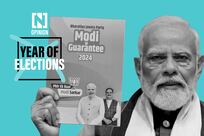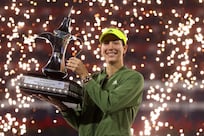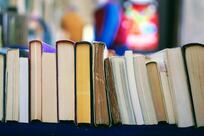Gawping tourists before the Parthenon, top-hatted gents at the races, permatanned jetsetters in Saint-Moritz, the chintz sofas and knick-knacks of lower-middle-class life: we have grown used to the English photographer Martin Parr’s dissection of the antics and foibles of British society. Now his latest exhibition has been drawing visitors to the impoverished multicultural Goutte d’Or, the most densely populated and racially mixed district of Paris, home, it is said, to 65 nationalities.
In January, Parr was invited by the area’s Institut des Cultures d’Islam, a cultural centre funded by the Paris council, to spend a week as artist in residence, bringing his perspective on Islam in France at a time when religion, immigration and communal identity are all hot topics of debate in Europe.
Parr admits that he has generally been reluctant to take photographs in France because of the strict privacy laws. His most extensive previous project was a series on British cross-Channel shoppers cramming their trolleys in Calais. For Véronique Rieffel, the institute's director, curator of the exhibition and author of the forthcoming book Islamania, which is about the long fascination artists have with Islam, it was important to have an outsider's view of this politically sensitive district.
“I had met Martin Parr in Bamako, where I found his regard on Africa very pertinent,” she says. “Sometimes it is interesting to part from habitual visions for a regard that is foreign, to bring in something new.”
The institute paved the way for non-French-speaking Parr, visiting local inhabitants, shopkeepers and religious leaders in the week before the residency, to explain the project. “People here are sick of being photographed for the front page of the papers as Islamists, they are sick of that image and want us to bring a different vision of them. They have confidence in us because we’ve been here for four years, we are known by the inhabitants, the associations, the shopkeepers, it was important that the project went through us and that the people appropriated the project,” says Rieffel, who has kept the communication going even after the residency was finished.
“A week before the inauguration we held an evening specially for those inhabitants who had been photographed, and their friends and neighbours, and we offered them their portrait by Martin Parr,” she explains. “It throws a light on them that is different from usual. For once one speaks well of them, with tenderness, with empathy; it was important for us that they saw the photos before everybody else, so that they were not surprised, so that they appropriated their image rather than the usually stolen images.”
The subject matter is new for Parr but the technique is familiar. Parr has an artist’s eye for absurdities and telling details. Just as he has previously picked up clothes and pastimes to analyse the intricacies of the British class system, here his eye for colour and the incongruous bring out the district’s complexities. Here, though, you feel a sense of gentler sympathy, as he persuaded residents to overcome their mistrust of photography, than in his often caustic view of the British.
The grinning dog behind the reception counter of a cheap hotel is, at first sight, an exercise in shocking pink and green, in fake marble and plastic wood, but also reveals the dual allegiance as the eye falls on two flags propped against the wall, a French tricolour and the Algerian flag. Parr's characteristic sense of colour and his knack of balancing on the brink of kitsch are also evident in a shelf of colourful plastic teapots in one of the district's shops, the stacked-up packets of groceries and fizzy drinks imported from the Maghreb, or his portrait of flashy stripy-suited Jocelyn, king of the sappeurs (Paris's snappily dressed Congolese community), standing, or rather strutting, in his shop before the rails of loudly striped jackets.
Parr captures well the mood of a quarter that is at once exotic and totally Parisian, the sense of strange yet ordinary that you feel when you walk through the neighbourhood. In one image, entitled La Ferme de Paris, you see a room full of live chickens housed next to a mosque, in another the wrought iron of a Haussmannian apartment building.
Parr's approach is matter-of-fact and noncommittal – Friday prayers, for example, when some streets are literally blocked by the overspill of worshippers from the area's two mosques, something that is often viewed in France as deliberate provocation. Parr, who also shot the packed prayer rooms inside the mosque, does not pass judgement but instead, through his sense of composition, Prière rue Polonceau, un vendredi, a photo of men praying in the street, reveals a vision of endless rows of men in blue-denim jeans, trainers lined up along the kerb.
While Parr felt he was unable to take some of the images in the streets he would have liked, he did gain access to places rarely seen – the prayer room at the mosque, access to apartments, the Algerian canteen, the old people’s home. In taking their portraits, Parr has got away from headline-hitting clichés of the Goutte d’Or as a centre of crime or Islamic militancy to a portrait of everyday Islam as part of the everyday life of the quarter, a portrait that is homely, warm, and sometimes unexpected.
“I am not French and consequently I don’t read the French newspapers. I think that I came here without complexes and without any preconceptions about the district in particular,” Parr told Rieffel.
"I am content to photograph what I see, that's all," he said with a sort of ostensible naivety that allows him to reveal the hotchpotch of cultures and the tolerance of the neighbourhood, seen in photographs of Moroccan women in headscarves eating the flaky pastry galette des rois (a typically French epiphany treat), portraits of the priest and the iman at the mosque, a Hindu ceremony or the saxophone repairer who has converted to Islam.
The subject has taken on even more resonance since Parr's residency. The show opened on April 5, the same day as the controversial parliamentary debate on laicité, or secularism, and a week before the implementation of France's new law banning the burqa in public spaces. As neither photo-journalist nor political artist but social observer, Parr gives a portrait of a district of Paris few other Parisians or tourists ever visit and a picture of Islam that goes far beyond the clichés typically presented in the media.
Martin Parr’s The Goutte d’Or is on show at the Institut des Cultures d’Islam, Paris, until July 2.
Follow us on Twitter and keep up to date with the latest in arts and lifestyle news at twitter.com/LifeNationalUAE
